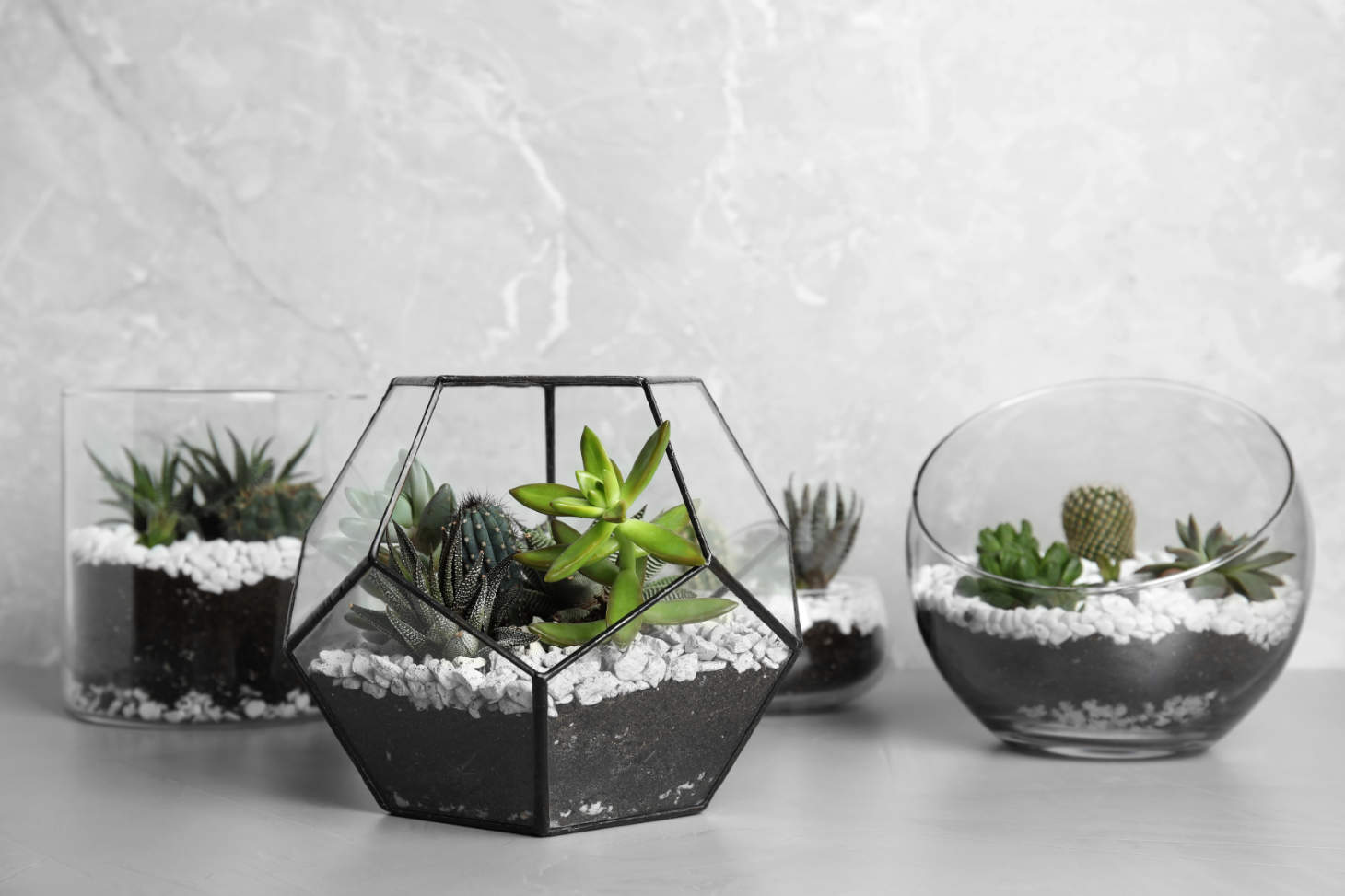How to Create a Succulent Terrarium
Creating a succulent terrarium is a fun and easy DIY project. You can make a beautiful mini garden in a glass container with just a few materials. To make a succulent terrarium, start by adding a layer of gravel for drainage, then add activated charcoal, soil, and your chosen succulents.
Succulents need good air flow, so use an open container without a lid. Pick a spot with bright indirect light for your terrarium. Avoid direct sunlight, which can harm the plants. Water sparingly when the soil feels dry.
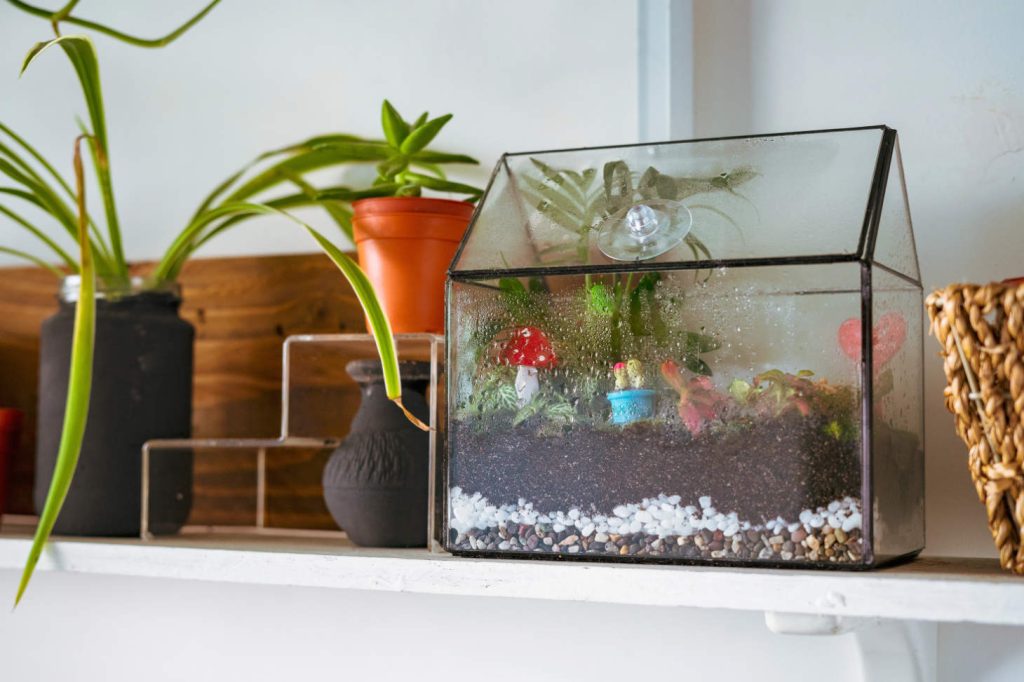
This project lets you get creative with plant choices and decorative elements. You can add rocks, figurines, or colored sand to make your terrarium unique. With proper care, your succulent terrarium will thrive and bring a touch of nature indoors.
Selecting the Perfect Container
Choosing the right container is key for your succulent terrarium. The container impacts plant health and the overall look. Let’s explore the options.
Glass Container Essentials
Glass containers are ideal for succulent terrariums. They let in light and show off your plants. Pick a container with a wide opening for easy planting. Make sure it’s clean and dry before use.
Glass jars, bowls, or vases work well. The size depends on how many plants you want. Bigger isn’t always better – succulents like snug spaces.
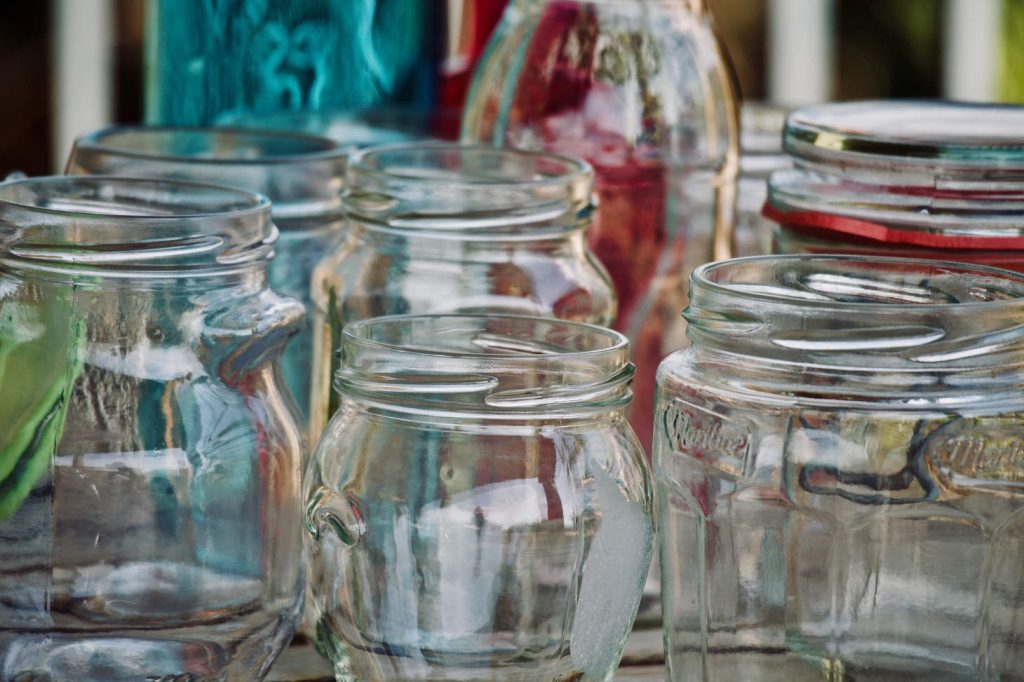
Look for containers without drainage holes. This prevents water from leaking out. You’ll control watering more carefully, which succulents prefer.
Open vs Closed Terrariums
Open terrariums are best for succulents. They allow air flow, which these plants need. An open top lets excess moisture escape.
Closed terrariums trap humidity. This can lead to rot in succulents. If you use a lid, keep it off most of the time.
Open designs give you more freedom with plant height. Tall succulents can grow without hitting a lid. You can also reach in easily to tend your plants.
For a unique look, try a hanging glass terrarium. These add interest to any room. Just make sure they’re secure and won’t tip over.
Essential Supplies for Your Terrarium
Creating a succulent terrarium requires specific materials to keep your plants healthy. The right supplies will ensure proper drainage, prevent root rot, and add visual appeal.
Choosing the Right Potting Mix
Succulent potting mix is crucial for your terrarium. It should be well-draining and low in organic matter. Look for mixes containing ingredients like coarse sand, perlite, pumice, and small gravel or pebbles. These ingredients help water flow through quickly.
You can make your own mix by combining:
- 1 part succulent-specific potting mix (or a mix of coco coir and composted bark in equal parts)
- 1 part coarse sand or pumice
- 1 part perlite or expanded clay (LECA)
This blend gives roots the air and drainage they need. Avoid regular potting soil, as it holds too much water. Your succulents will thrive in a mix that dries out fast between waterings.
You could mix your own succulent soil, but finding all the ingredients can be a hassle, and you’ll likely end up with leftover materials you don’t need. Our high-performance succulent soil takes the guesswork out of the equation. It’s expertly blended with the perfect balance of drainage materials and nutrients, so your succulents get exactly what they need. No mixing, no waste, just perfect soil, ready to use.
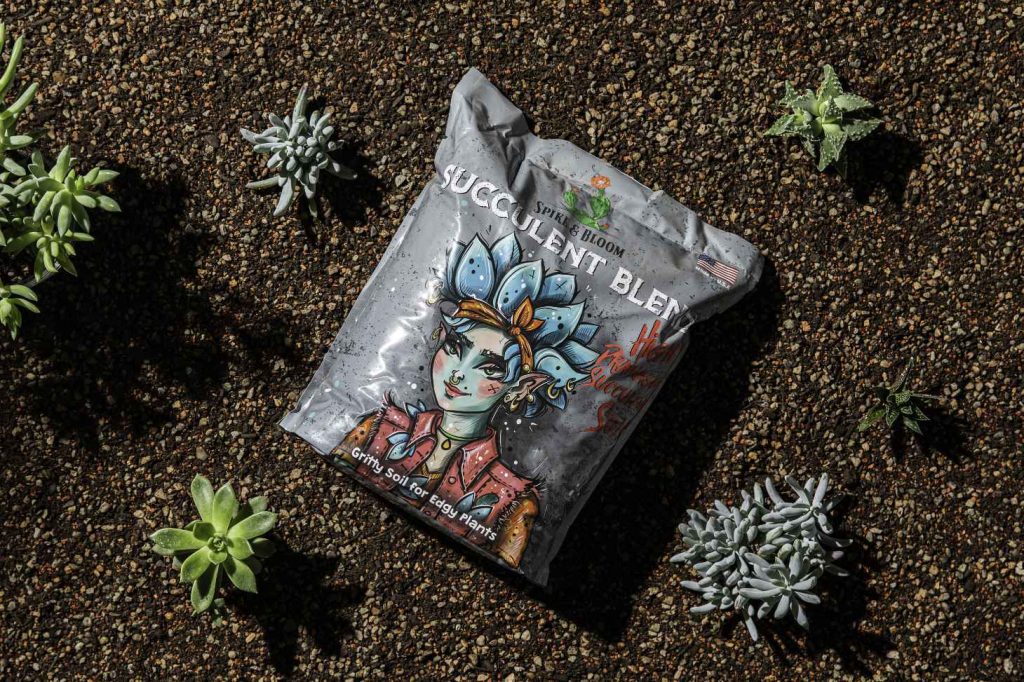
Wouldn’t you rather spend your time creating a beautiful terrarium than mixing soil? Our succulent soil lets you focus on the fun part – designing and planting – while we handle the science. Give your succulents the best start possible! Check out our product page to learn more and order yours today.
The Role of Activated Charcoal
Activated charcoal is a key component in terrariums. It helps keep the soil fresh and prevents odors. This material also filters water and absorbs excess moisture.
Add a thin layer of activated charcoal above your drainage rocks. Use about 1/4 to 1/2 inch deep. This layer will:
- Purify water
- Reduce bacteria growth
- Keep your terrarium smelling clean
Activated charcoal is available at pet stores or garden centers. Make sure to rinse it before use to remove any dust.
Decorative Elements and Accents
Decorative items add personality to your terrarium. Choose pieces that match your style and complement your succulents. Some popular options include:
- Small pebbles or colored sand
- Miniature figurines
- Crystals or geodes
- Driftwood or bark pieces
Use these accents sparingly. Too many decorations can overcrowd your plants. Place larger items first, then add smaller accents around them.
Consider the size of your container when selecting decorations. Tiny terrariums look best with minimal, small accents. Larger containers can handle bigger statement pieces.
Creating a Drainage System
A good drainage system is key for healthy succulents in a terrarium. It prevents water from pooling at the bottom and keeps roots from rotting. Let’s look at how to set up proper drainage.
Drainage Layer Explained
The drainage layer sits at the base of your terrarium. It catches excess water and keeps it away from plant roots. This layer should be about 1-2 inches deep. Use materials that don’t break down over time.
Pea gravel works well for this layer. It’s small, smooth, and allows water to flow freely. You can also use small pebbles or aquarium rocks.
Make sure to spread the layer evenly. This helps water drain properly across the whole container.
Materials for Effective Drainage
After the base layer, add materials that improve drainage and aeration. These help water move through the soil faster.
Mix perlite into your potting soil. It’s a lightweight, porous material that prevents soil compaction. Use about 1 part perlite to 3 parts soil.
Cactus soil is another good option. It’s pre-mixed with coarse sand and other gritty materials. This soil drains quickly and mimics succulents’ natural habitat.
You can also add a thin layer of activated charcoal on top of your drainage rocks. It helps filter water and keeps the soil fresh.
Choosing Your Succulents
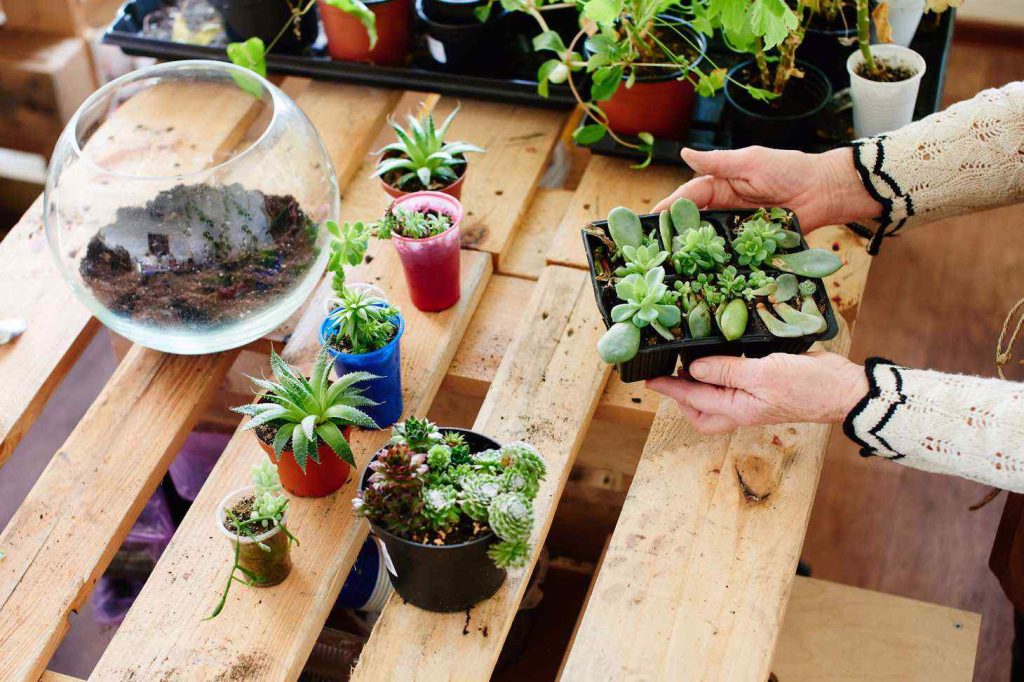
Picking the right succulents is key to a thriving terrarium. Focus on size, color, and growth habits to create an eye-catching display.
Succulent Varieties and Their Needs
Echeveria are popular for their rosette shapes and come in many colors. They need bright light and do well in terrariums.
Sedum, also called stonecrop, have small leaves and spreading growth. They’re great for filling spaces between other plants.
Haworthia, like the zebra plant, stay small and tolerate lower light. They’re perfect for office terrariums.
Hens and chicks (Sempervivum) form tight clusters of rosettes. They add interesting textures to your display.
Cacti can work in terrariums too. Choose small, slow-growing types to keep things in scale.
Understanding Light and Humidity Requirements
Most succulents need lots of light. Place your terrarium near a sunny window where it receives bright, indirect light for best results.
South-facing windows offer full sun. East or west windows work well too.
Low humidity is best for succulents. Good air flow helps prevent rot.
Avoid misting your terrarium. Succulents store water in their leaves and don’t like wet air.
Some succulents, like aloe and agave, can outgrow small spaces quickly. Choose dwarf varieties for long-term success.
Planting Your Succulents
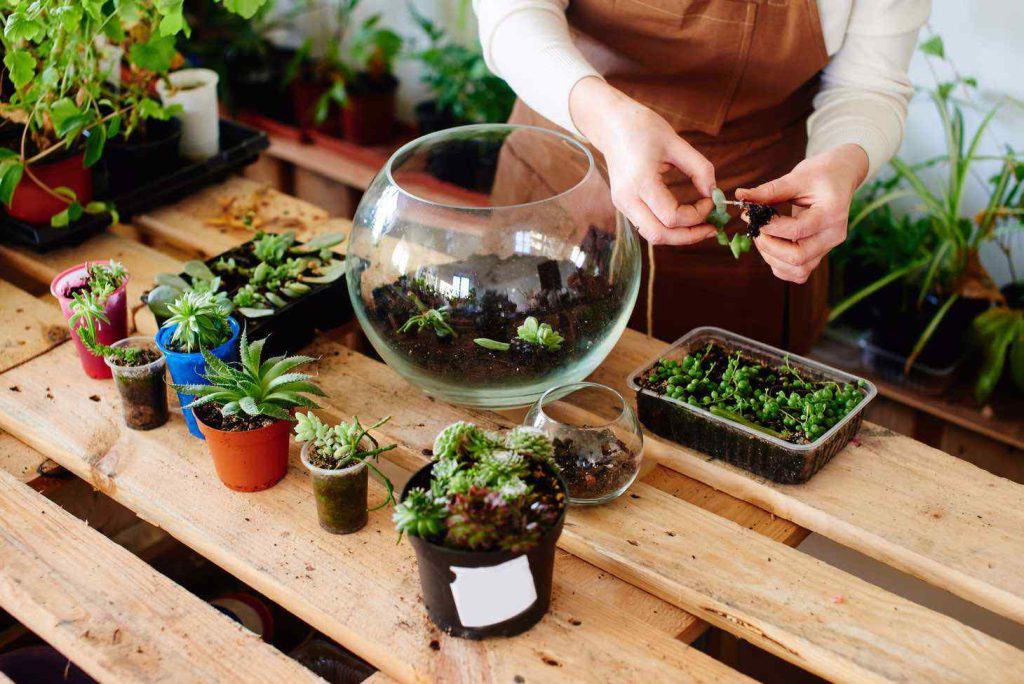
Planting succulents in your terrarium is an exciting step. You’ll create layers and arrange your plants to make a beautiful display.
Layering Your Terrarium
Start with a layer of small rocks at the bottom of your container. This helps with drainage. Add about an inch of rocks.
Next, put a thin layer of activated charcoal on top of the rocks. This keeps the soil fresh.
Now add cactus or succulent potting mix. Fill the container about halfway with soil. This gives your plants room to grow.
Arranging Your Plants
- Take your succulents out of their pots. Gently shake off extra soil from the roots.
- Put your biggest plant in first. Place it slightly off-center for a natural look.
- Add smaller plants around it. Leave some space between them so they can grow.
- Use tweezers to place tiny plants in small spots.
- Press the soil gently around each plant to secure it. Be careful not to damage the leaves.
- Add more soil if needed to cover the roots. Don’t bury the leaves or stems.
- Finish by adding small rocks or pebbles on top of the soil. This looks nice and helps keep the soil in place.
Watering Your Terrarium
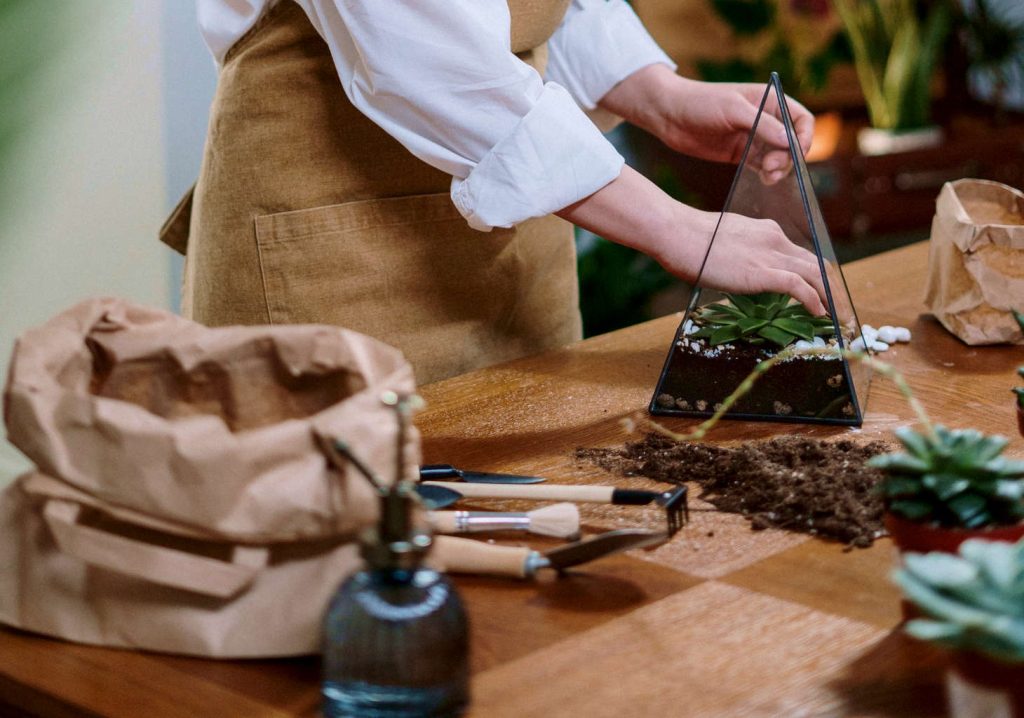
Watering is key to keeping your succulent terrarium healthy. You need to find the right balance to keep your plants happy without drowning them.
How Often and How Much
Water your terrarium when the soil is completely dry. This may be every 2-4 weeks, depending on your climate. Use a small watering can or spray bottle to add water slowly but try not to get the plants leaves wet.
Aim for just enough to moisten the soil without soaking it. A good rule is to use about 1-2 tablespoons of water for a small terrarium.
Don’t let water pool at the bottom. If you see excess water, leave the container open to allow evaporation.
Check the soil moisture before watering. Stick your finger about an inch into the soil. If it feels dry, it’s time to water.
Preventing Overwatering and Root Rot
Overwatering is the biggest threat to succulents. It can lead to root rot and kill your plants. Look out for these signs of overwatering:
- Soft, mushy leaves
- Yellowing or translucent leaves
- Black spots on leaves or stems
To prevent root rot:
- Use well-draining soil mix
- Add a layer of pebbles at the bottom for drainage
- Choose a container with drainage holes if possible
If you spot root rot, remove the affected plant right away. Let the soil dry out before watering again. You may need to repot healthy plants in fresh, dry soil.
Remember, succulents store water in their leaves. They can survive with less water than you might think. When in doubt, it’s better to underwater than overwater.
Maintaining the Terrarium
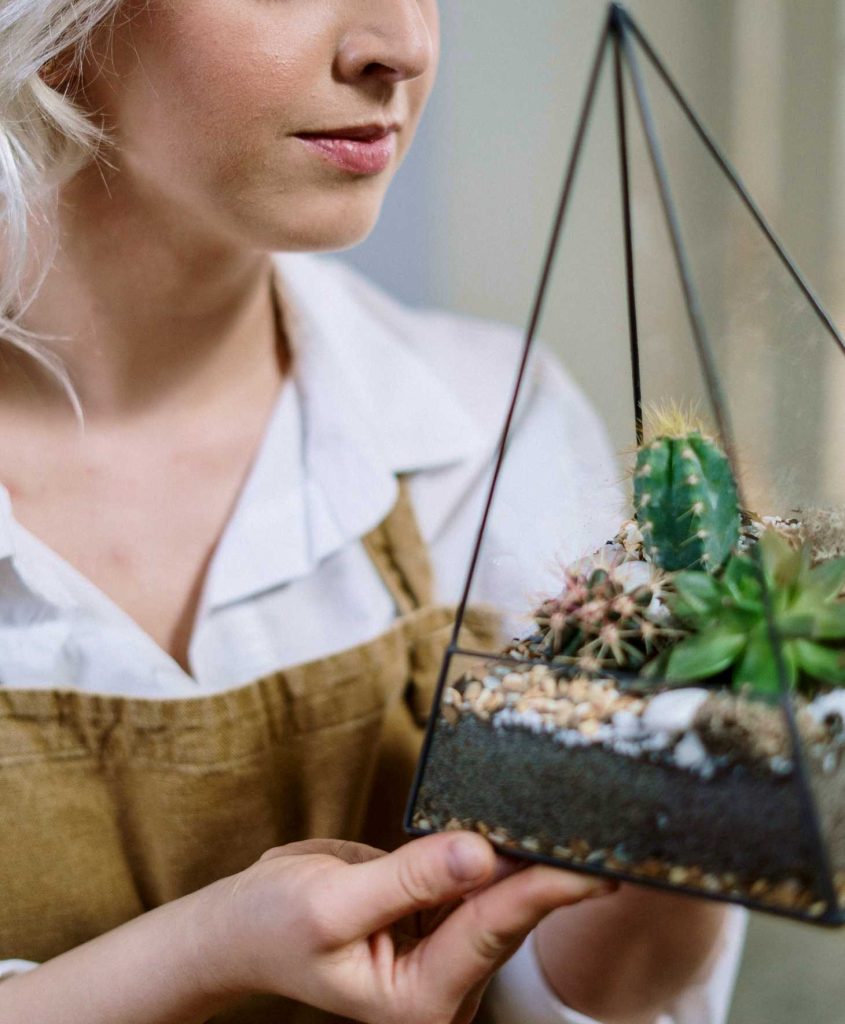
Keeping your succulent terrarium healthy requires minimal effort but consistent care. Focus on cleaning the glass and tending to your plants to ensure a thriving miniature garden.
Cleaning the Glass
Clean the glass of your terrarium every few weeks. Use a soft, lint-free cloth to wipe away dust and fingerprints. For stubborn spots, lightly dampen the cloth with water. Avoid harsh chemicals that could harm your plants.
Open the terrarium lid occasionally to prevent condensation buildup. This helps maintain proper humidity levels and keeps the glass clear.
If you notice algae growth, gently scrape it off with a plastic tool. Be careful not to scratch the glass surface.
Pruning and Grooming Your Plants
Check your succulents regularly for dead leaves or overgrowth. Remove any yellow, brown, or mushy leaves with clean scissors or tweezers. This prevents rot and disease spread.
Trim plants that are growing too large for the terrarium. Cut stems cleanly at a 45-degree angle to encourage healthy regrowth.
Rotate your terrarium every few weeks. This ensures all plants receive even light exposure and grow uniformly.
Remove any fallen leaves or debris from the soil surface. These can attract pests or cause mold growth if left unchecked.
If you notice any pests, isolate the affected plant and treat it with a gentle insecticidal soap before returning it to the terrarium.
Accessorizing Your Terrarium
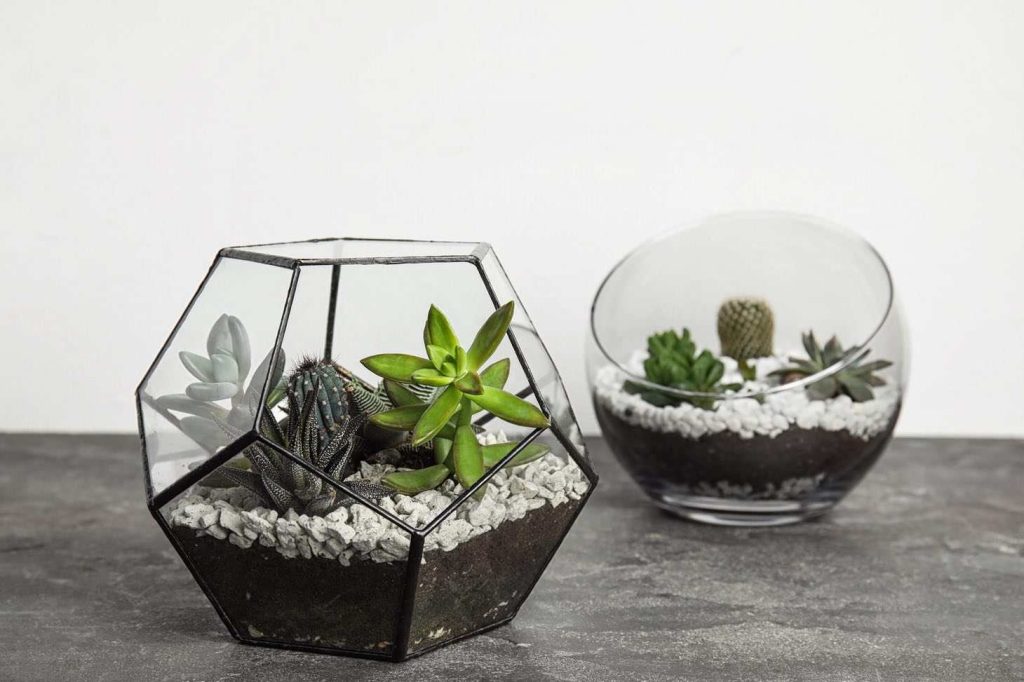
Adding personal touches to your succulent terrarium brings it to life. Accent plants and miniature decorations create a unique, eye-catching display.
Choosing Accent Plants
Pick accent plants that complement your succulents. Air plants work well and don’t need soil. Small ferns or mosses add texture and color.
Choose plants with similar care needs to your succulents. This ensures all plants thrive together.
Arrange taller plants in the back and shorter ones in front. This creates depth and visual interest.
Try colorful varieties like red-tipped Sedum or blue Echeveria for pops of color.
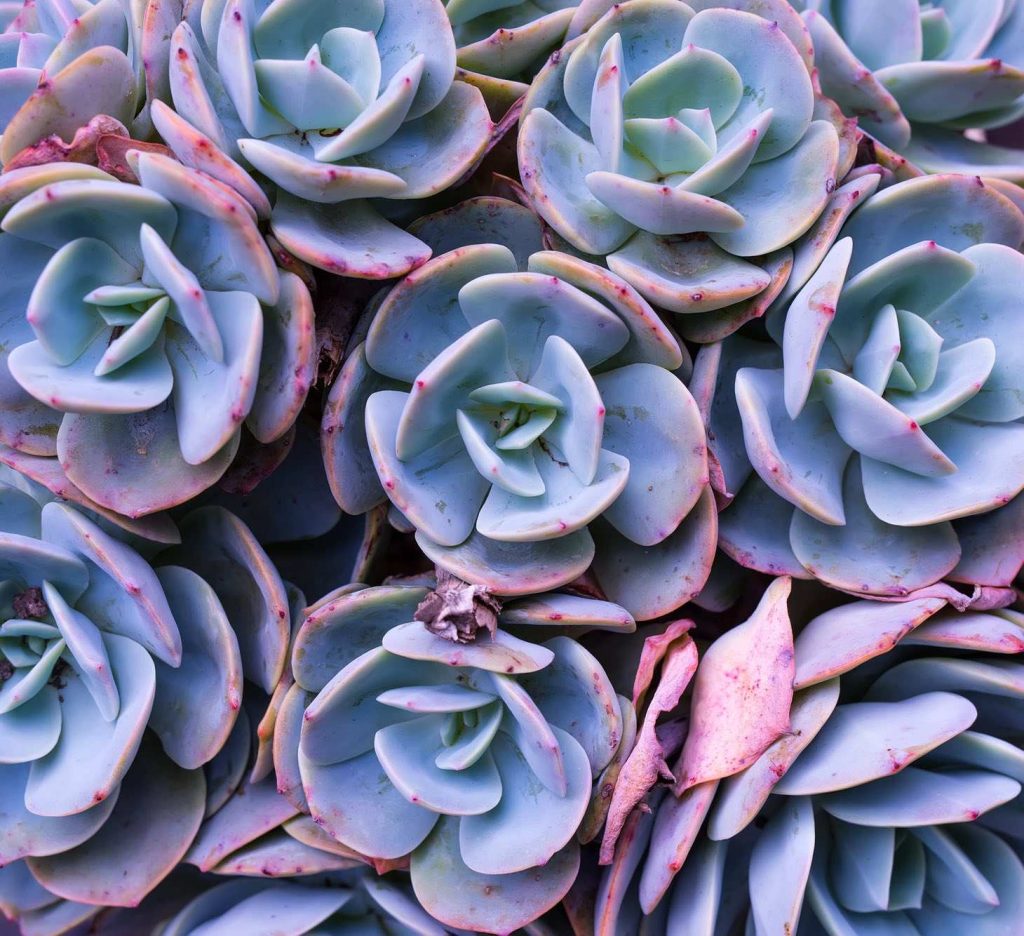
Adding Miniature Decorations
Tiny decorations turn your terrarium into a fairy garden. Use small figurines, houses, or animals to create scenes.
Colorful pebbles or sand make great paths between plants.
Add tiny benches or swings for a whimsical touch.
Natural items like twigs, bark, or shells blend well with plants.
Place a small mirror to create the illusion of more space.
Use tweezers to position small items without disturbing plants.
Don’t overcrowd the terrarium. Leave open spaces for a balanced look.
Lighting and Placement
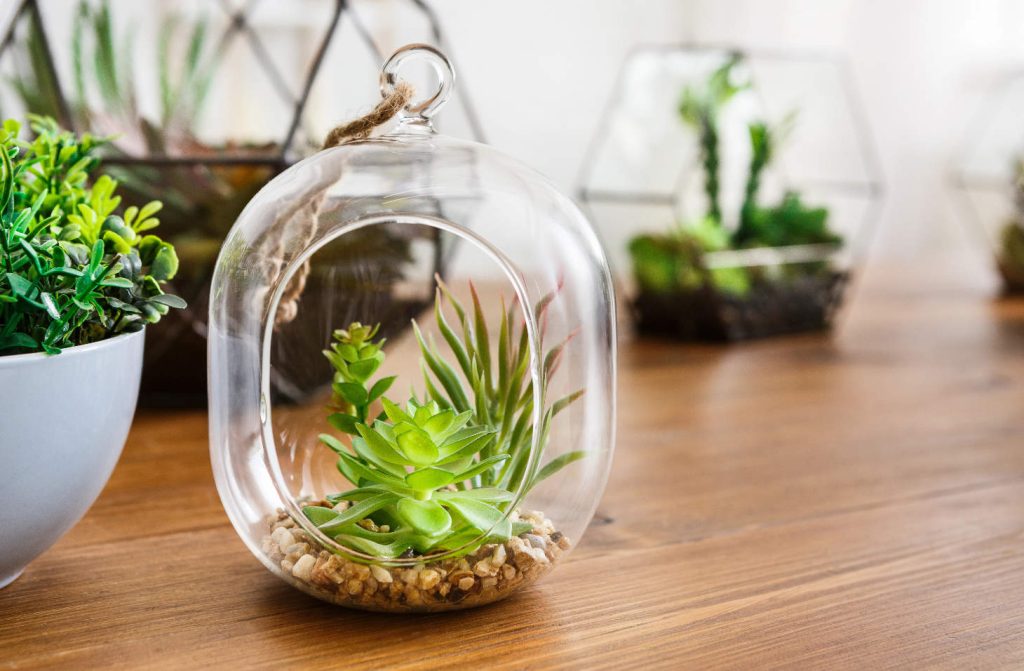
Proper lighting and placement are key to a thriving succulent terrarium. Choosing the right spot and light levels will keep your plants healthy and happy.
Finding the Sweet Spot
Succulents love bright, indirect light. Place your terrarium near a window that gets plenty of filtered sunlight. East or west-facing windows often work well. Many succulents should avoid prolonged exposure to full sun, but some varieties can thrive in full sun conditions depending on their type and environment.
Succulents can thrive in south-facing windows, but care should be taken to avoid direct exposure to intense sunlight that can cause sunburn.
Watch for signs of too much or too little light. If your plants stretch or become pale, they need more light. If they turn brown or develop dry patches, they’re getting too much.
Rotate your terrarium every few weeks. This helps all sides of the plants get even light exposure.
Artificial Lighting Solutions
Don’t have a bright spot? No problem. You can use grow lights for your indoor garden. LED grow lights are energy-efficient and don’t produce much heat.
Place the light 6-12 inches above your terrarium. Keep it on for 12-14 hours a day. This mimics natural daylight cycles.
Choose a light with a mix of red and blue wavelengths. These colors help with growth and flowering. Some grow lights come with timers, making it easy to maintain a consistent schedule.
Remember to adjust the light as your plants grow. Taller plants may need the light raised to prevent burning.
Troubleshooting Common Issues

Even well-cared-for succulent terrariums can face problems. Knowing how to spot and fix issues will keep your mini garden thriving.
Dealing with Pests and Diseases
Check your terrarium regularly for signs of pests like mealybugs or spider mites. If you spot tiny white fuzzy spots or fine webs, act fast. Remove affected plants and isolate them. Treat with neem oil or insecticidal soap. For fungal issues, reduce watering and improve air flow.
Clean tools before use to prevent disease spread. If rot appears, remove affected parts immediately. Repot plants in fresh, dry soil if needed. Always use sterile potting mix and clean containers to prevent problems.
Addressing Yellowing or Wilting
Yellowing leaves often signal overwatering. This can lead to root rot, a serious issue for succulents. If you notice soft, mushy stems or leaves, act quickly. Remove the plant and check its roots. Cut away any black or mushy parts.
Let the plant dry out completely before replanting in fresh, well-draining soil. Adjust your watering schedule. Water only when the soil is completely dry. Ensure your terrarium has proper drainage to prevent future issues.
For wilting, check if the soil is bone dry. If so, your plant may need more water. Give it a good soak, then let it dry out again. Find a balance between too wet and too dry for happy succulents.
Inspiring Terrarium Projects
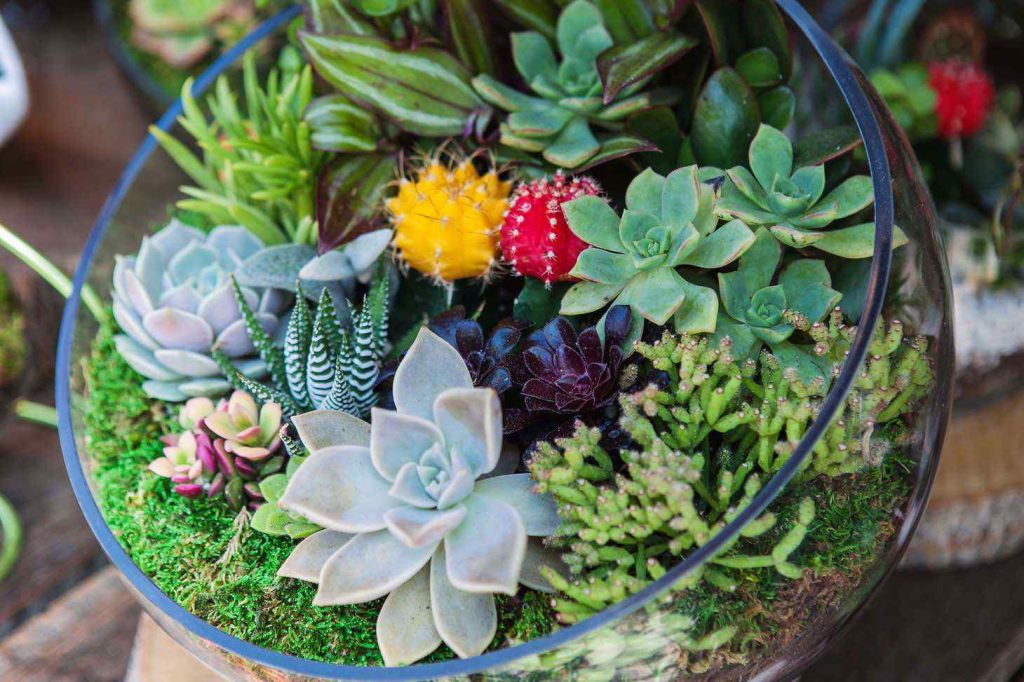
Succulent terrariums offer endless creative possibilities. These miniature gardens can be customized to fit your style and space.
DIY Succulent Terrarium Ideas
Create a beach-themed terrarium with sand, shells, and coastal succulents like Crassula capitella.
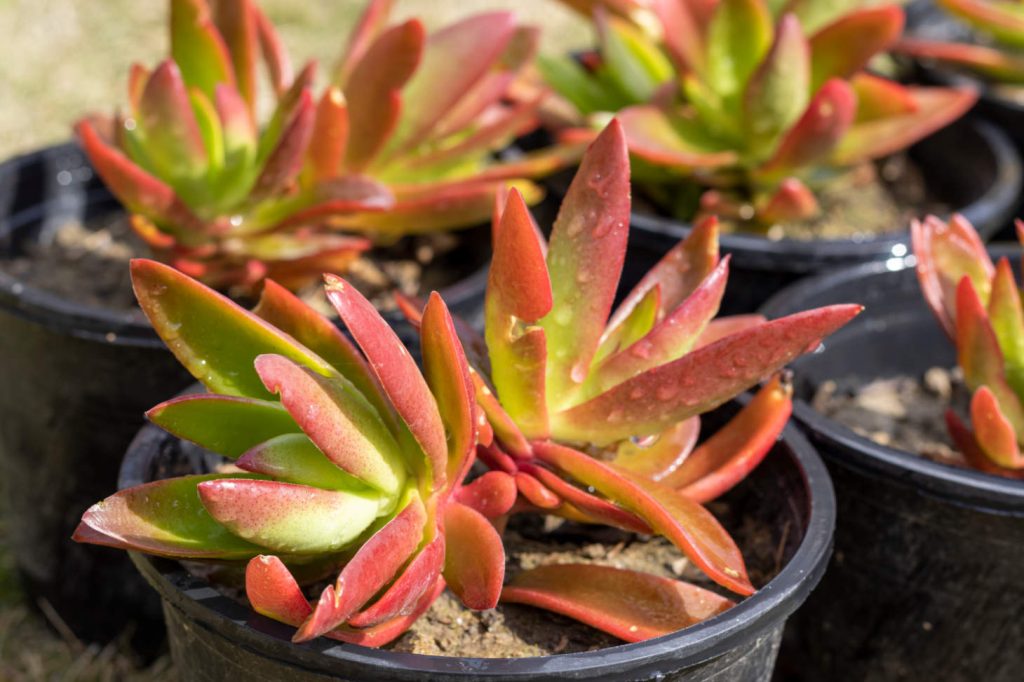
Use a clear glass bowl and layer white sand at the bottom. Add small pebbles and seashells for texture. Plant a few small succulents like Echeveria or Sedum. Finish with decorative elements like a tiny umbrella or driftwood.
Try a desert oasis design. Use a wide, shallow container. Layer red sand and small rocks. Add cacti and drought-tolerant succulents. Create a focal point with a small figurine or colorful crystal. This low-maintenance option is perfect for busy plant lovers.
For a modern look, use a geometric glass container. Choose succulents with interesting shapes and colors. Arrange them in a pattern or gradient. Add black sand or crushed charcoal for contrast.
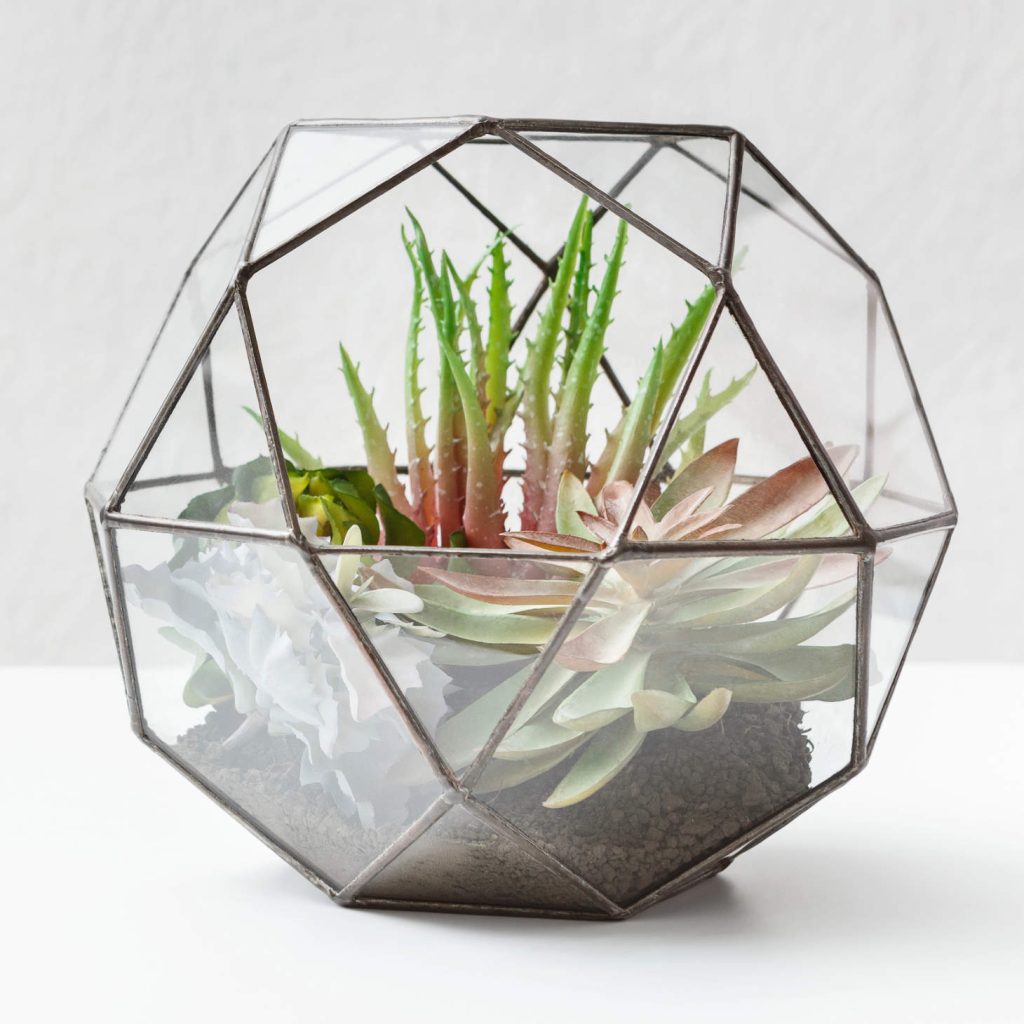
Building a Miniature Ecosystem
Start with a large glass jar or fish bowl. Add a layer of small rocks for drainage. Mix potting soil with coarse sand for good aeration. Choose plants that thrive in similar conditions, like Crassula and Kalanchoe.
Create different levels in your terrarium. Use rocks or wood to form hills and valleys. This adds visual interest and mimics natural landscapes. Plant taller succulents in the back and shorter ones in front.
Add moss for a lush, forest-like feel. Place small figurines or fairy garden accessories to create a whimsical scene. Remember to leave some open space for air circulation.
Water sparingly and place in bright, indirect light. Your miniature ecosystem will grow and change over time, providing a living piece of art for your home.
Frequently Asked Questions
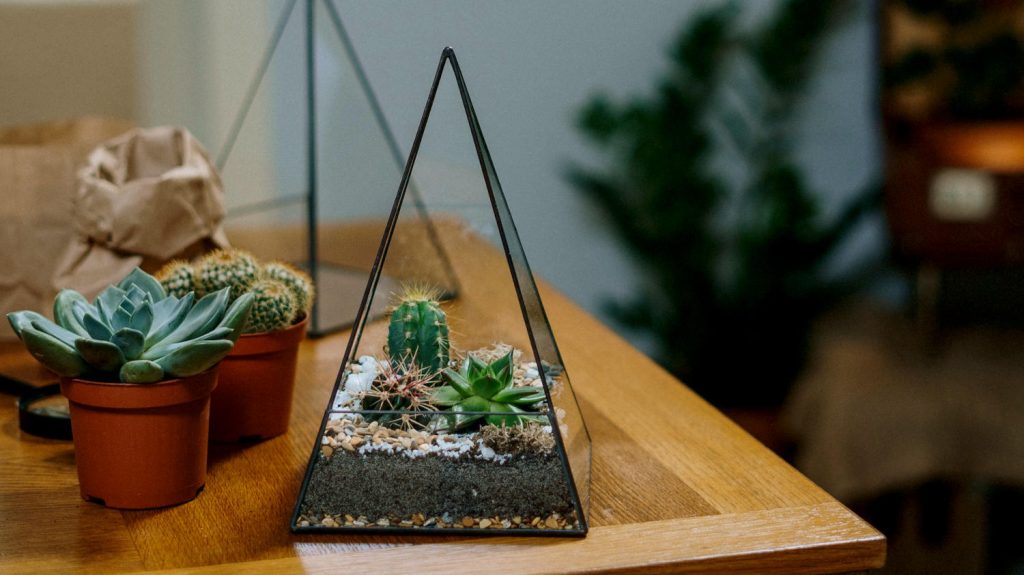
Creating a succulent terrarium can be fun and rewarding. These common questions cover key aspects of setup, design, and care to help you get started.
What are the essential steps for creating a step-by-step succulent terrarium?
Choose a clear glass container. Add a layer of gravel for drainage. Mix potting soil with coarse sand or perlite. Plant succulents carefully. Add decorative elements like rocks or figurines. Water sparingly after planting.
Let the soil dry between waterings. Place the terrarium in bright, indirect light. Trim any overgrown plants as needed.
What are the best practices for setting up an indoor succulent terrarium?
Pick a spot with plenty of indirect sunlight. Use a container with drainage holes if possible. Select succulents that stay small. Group plants with similar water and light needs together.
Add activated charcoal to the soil to prevent mold. Leave space between plants for air circulation. Water only when the soil is completely dry.
Which types of containers are suitable for making a DIY succulent terrarium?
Glass bowls, jars, and fish tanks work well. Look for containers at least 6 inches deep. Open containers are better than closed ones for air flow. A closed terrarium will most certainly lead to the death of your succulents!
Some good options include mason jars, fishbowls, and glass vases. Avoid containers that are too small or don’t allow excess water to drain.
What is the ideal soil composition for a succulent terrarium?
The ideal soil composition for a succulent terrarium includes potting soil, coarse sand, and perlite to ensure proper drainage and provide necessary nutrients. Our premium succulent soil provides the perfect balance of these ingredients and more, ready to use right out of the bag.
You can also add small pebbles or crushed granite to improve drainage. Cactus potting mix is another good option for succulents.
What are some creative ideas for designing a succulent terrarium?
Create a desert scene with sand and small cacti. Add colorful rocks or crystals for visual interest. Use driftwood or interesting branches as focal points.
Try a beach theme with white sand and seashells. Make a miniature fairy garden with tiny decorations. Group plants by color or texture for a striking look.
How can you maintain a healthy environment for succulents in a terrarium?
Water carefully and sparingly. Most succulents need water only every 2-3 weeks. Remove any dead leaves promptly to prevent rot.
Clean the glass regularly to maximize light. Prune plants if they outgrow the space. Fertilize lightly during the growing season with a balanced, water soluble fertilizer.

